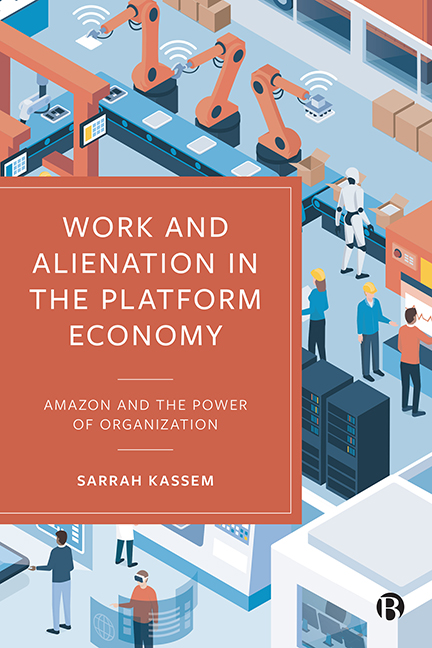6 - Cog in the Machine: Working the Amazon Circulation Line
Published online by Cambridge University Press: 18 January 2024
Summary
“I am not a robot.”
Warehouse workerWarehouse workers of Amazon’s e-commerce platform occupy a complex role: they are manual workers reminiscent of those inside factory walls in the industrial era, now transported into the technological conditions of the 21st century. Whereas factories produce, Amazon circulates. The organization of these warehouses reflects Taylorist techniques of scientific management. These monitor and control every step of the labor process to ensure a docile and (algorithmically) disciplined workforce to keep up with massive expansions and ever-increasing demand. In the process, this location-based traditional time-wage platform systematically alienates workers across the dimensions of their laboring and being. As one worker puts it, they do not just become “part of the machine, [they] are the machine”. To dive into the walls of the warehouse, where the division of labor and organization of work(ers) is similar across the globe, I abstract the larger material context. I return to this in the next chapter to shed light on some relative differences in the working conditions that play a role in the agency of labor.
Alienation from the labor activity
As all estrangement and labor exploitation is rooted in the process of laboring, the alienation of Amazon’s workers is founded on the systematic division of labor. Given that these workers occupy a place in circulation, the corporation realizes value that it does not necessarily produce. It is, therefore, in its interest to shorten the turnover time of products as much as possible (Marx, 1978). Amazon has a highly productive and efficient circulation line that can organize workers in ways more traditionally known in factories, while applying various social and technological mechanisms of surveillance.
A hierarchy of supervisors, ranging from leads, who directly supervise manual workers, to various managers, who supervise leads and others, ensures that workers labor productively as interchangeable cogs in the Amazon machine. The ability to labor according to the demands of Amazon is the criteria to get hired. Amazon stresses that it is “committed to a diverse and inclusive workplace. Amazon is an equal opportunity employer and does not discriminate on the basis of race, national origin, gender, gender identity, sexual orientation, protected veteran status, disability, age, or other legally protected status.”
- Type
- Chapter
- Information
- Work and Alienation in the Platform EconomyAmazon and the Power of Organization, pp. 67 - 79Publisher: Bristol University PressPrint publication year: 2023



